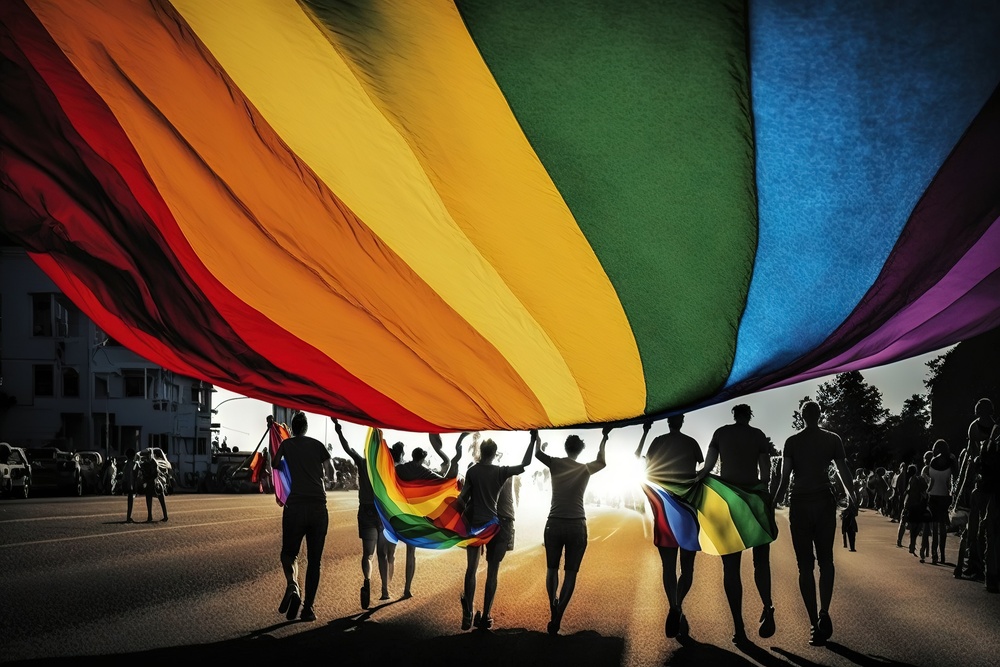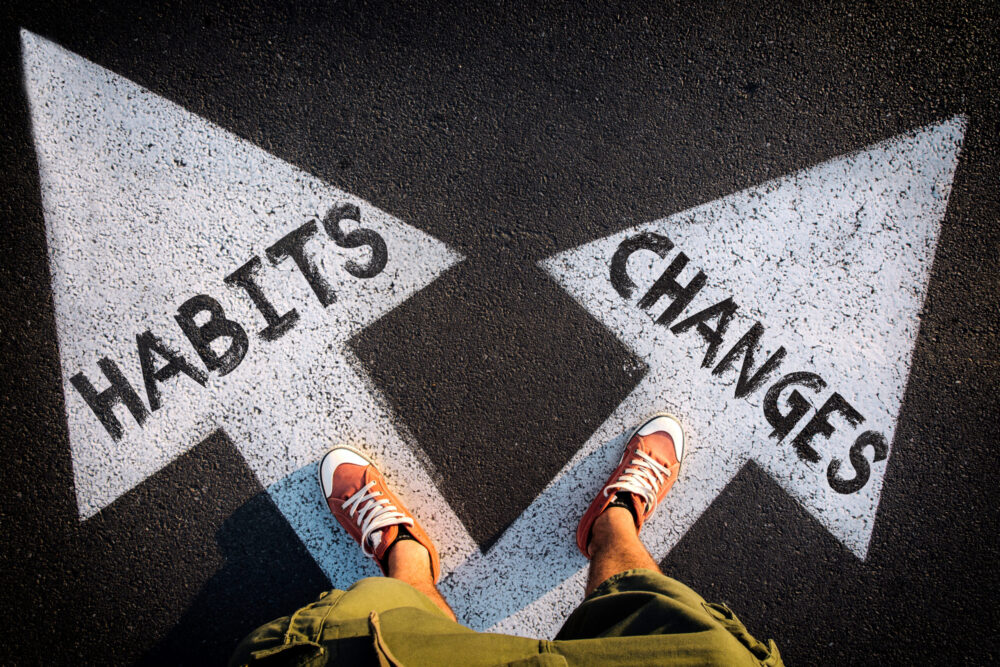In today’s diverse and inclusive workplaces, it is crucial to support and uplift colleagues from all backgrounds. As June is Pride Month, we wanted to hone in on best practice approaches to supporting LGBTQIA+ colleagues at work. By fostering an environment of acceptance and understanding, companies can ensure that all employees feel valued and respected.
LGBTQIA+ individuals constitute between 2-5% of the UK population and, unfortunately, still face significant discrimination in the workplace and notable health disparities, particularly in mental health and wellbeing1.
Workplaces have the potential to be powerful positive influences, creating supportive environments that enhance the mental health and wellbeing of LGBTQIA+ employees and mitigate some negative societal impacts. However, they can also be harmful when individuals encounter homophobia, biphobia, or transphobia from colleagues, customers, or contractors.
Responsible businesses should strive to create workplaces where individuals can achieve their professional and personal potential and express their true selves without fear of discrimination or harm2.
The role of companies in promoting equality
Companies must spearhead the ongoing fight for equality by creating environments where employees feel free to be their authentic selves and give their best efforts3.
To empower LGBTQIA+ individuals in the workplace, it is essential to cultivate an inclusive atmosphere that promotes respect, value, and support for everyone. This can also ultimately lead to increased job satisfaction, productivity, and retention3.
The growing importance of inclusion in business
With more of the population coming out as LGBTQIA+ — a study by the Human Rights Campaign predicts that one in seven adults will identify as LGBTQIA+ by 2030 — prioritising inclusion is increasingly recognised as a smart business decision4.
Greg Sottolano, chief people officer at US-based Folx Health, which specialises in health care for the LGBTQIA+ community, emphasises the importance of this by suggesting, “The queer workforce itself is growing. So, the future of your workforce and the future of your productivity depends on supporting the LGBTQIA+ community.”
Seeking support and recognition
Support is what LGBTQIA+ candidates and employees seek. According to an Indeed report from last year, 79% of LGBTQIA+ job applicants prefer to work for companies that publicly support and protect their community. Without this support, employers may face challenges in recruitment, retention, and engagement, notes Charlotte Hughes, founder and CEO of Inclusive Leaders Group, a talent development and DEI consulting firm.
Understanding allyship and its impact
Over the past decade, the workplace has seen a significant increase in diversity, equity, and inclusion initiatives. Consequently, the term “allyship” has become more prevalent, particularly in relation to the LGBTQIA+ community.
According to the Collins Dictionary, an ally is “someone who supports people who are in a minority group or who are discriminated against, even though they do not belong to that group themselves.” The concept of allyship is rooted in the idea of “strength in numbers”: amplifying the voices of marginalised groups, highlighting the issues they face, and uniting to advocate for meaningful change can significantly contribute to creating a fairer and more equitable society5.
Lewis McIntosh (they/them), Communications, Membership and Marketing Executive, Mental Health First Aid England states in an article on www.makeadifference.media, “The average person in the UK spends around 20% of their life working. That figure rises when we consider our commute, or how long it takes us to switch off after each day. To spend such a large portion of life working, we must do so comfortably and safely.”
Practical steps for effective allyship
As part of their LGBTQIA+ mental health guide, Mind highlight the do’s and don’ts for supporting someone who is LGBTQIA+:
- Accept Them for Who They Are: Accept and respect the person, recognizing their identity is not a phase. Show acceptance by discussing LGBTQIA+ topics positively and involving them in social activities. Use their preferred terms, understanding that language can evolve over time.
- Recognise Your Bias: Acknowledge personal biases shaped by social traditions that might exclude marginalized groups. Understand that different life choices are valid. Avoid assumptions about LGBTQIA+ identities, such as thinking all trans people want surgery.
- Stories About LGBTQIA+ People Being a Threat: Recognize that negative stereotypes about LGBTQIA+ people are unfounded and harmful. Seek accurate information from reliable LGBTQIA+ organizations.
- Don’t Ask Intrusive Questions: Be curious respectfully, avoiding personal questions about someone’s sex life or body. Seek information from credible LGBTQIA+ sources.
- Challenge Discrimination, Misconceptions, and Stigma: Actively challenge both major and minor instances of discrimination. Correct others when they misuse terms related to LGBTQIA+ identities.
- Don’t Make Assumptions: Avoid making assumptions about someone’s experiences. Be open to being corrected without defensiveness.
- Listen to Their Experiences: Provide space for them to share their experiences and listen empathetically. Suggest trusted helplines if they aren’t ready to talk.
- Show Them You Care: Demonstrate care through supportive actions, ensuring they feel respected and safe. Engage in activities they enjoy in LGBTQIA+-friendly environments.
- Support Them to Seek Help: Encourage seeking mental health support and help research LGBTQIA+-friendly services.
- Learn About LGBTQIA+ Issues: Educate yourself on LGBTQIA+ issues to better support your loved one. Use external resources for information rather than relying solely on the LGBTQIA+ person.
- Learn About Their Mental Health: Familiarize yourself with their specific mental health needs through reputable sources. Use resources like the A-Z of mental health for guidance.
- Take Care of Yourself: Remember to care for your own mental health while supporting others. Utilize support groups like FFLAG for friends and family of LGBTQIA+ individuals.
Empowering LGBTQIA+ individuals through education
Pepi Sappal, Head of PR and Communications at myGwork and Director of Fair Play Talks states, “Being a genuine and active LGBTQIA+ ally isn’t just about showing up for the good times, like Pride celebrations. It’s about standing up for LGBTQ+ rights in all areas of life, all year round. To do this effectively, it’s crucial to continually educate yourself about the community’s history, challenges, and current issues.”
Pepi offers a few tips on how to empower your LGBTQIA+ employees and best practive when it comes to being an ally:
- Make an effort to understand pronouns and use inclusive language: Stay informed about current events in the LGBTQIA+ community and make an effort to understand pronouns and use inclusive language. Honest mistakes, such as using the wrong pronoun, are inevitable. The key is to apologize sincerely and see it as a learning opportunity rather than something to shy away from.
- Recognise LGBTQ+ individuals facing multiple layers of discrimination: It’s also crucial to recognize that LGBTQIA+ individuals may encounter multiple layers of discrimination, particularly if they belong to additional marginalized groups (e.g., race, disability, age). Stay mindful of these intersecting and overlapping issues.
- Educate yourself: Numerous free resources are accessible to educate yourself on LGBTQIA+ issues and become an authentic ally. Follow LGBTQIA+ activists, writers, and creators on social media. Engage with movies, literature, and media produced by and for the LGBTQIA+ community, such as myGwork, Diva, Attitude, Pink News, Gay Times, and News Is Out. Many companies offer LGBTQIA+ resource or network groups you can join, and there are abundant free online resources available. Noteworthy websites include the Human Rights Campaign, GLAAD, The Trevor Project, and myGwork.
With Pride Month in full swing, it’s great to see so much attention, advocacy, and allyship directed to supporting LGBTQIA+ colleagues. We need to remember, though, that these initiatives must remain front of mind 365 days a year. Sustained commitment and continuous efforts are essential in fostering an inclusive and equitable environment for everyone, regardless of the month.
- https://www.bitc.org.uk/wp-content/uploads/2019/10/bitc-wellbeing-report-workingwithpride-feb2019.pdf
- https://docs.google.com/document/d/1aNITz9ZTy4rOgKSKr6863J45DBtkp84C32QAqfIwV0k/edit
- https://hrsea.economictimes.indiatimes.com/news/workplace/pride-2024-empowering-lgbtqia-employees-at-workplace/110702085?utm_source=copy&utm_medium=pshare
- https://hrexecutive.com/in-an-intense-climate-for-dei-4-ways-hr-can-avoid-pride-month-conflict/?oly_enc_id=9463B8076434A4D
- https://www.hays.co.uk/market-insights/article/workplace-inclusion-are-you-as-much-of-an-lgbtq-ally-as-you-think
You might also like:
















